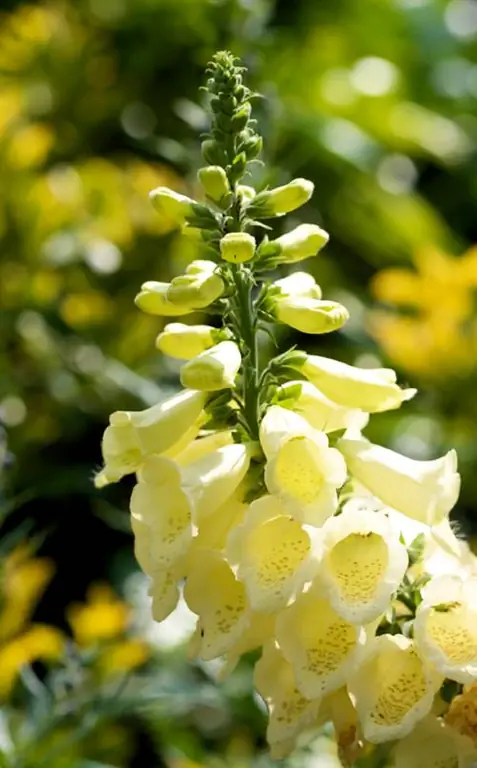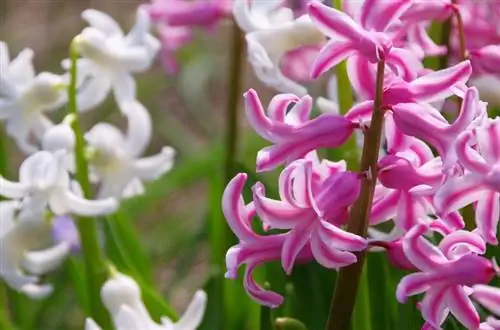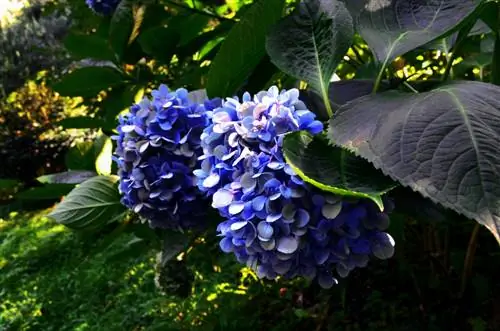- Author admin [email protected].
- Public 2023-12-16 16:46.
- Last modified 2025-01-23 11:20.
It's planted in no time. But what comes next? Does the foxglove require a lot of care or does it get along well without help? Here you will find the answers to the most important care questions.

How do you properly care for foxgloves?
The foxglove needs regular watering with lime-free water, preferably rainwater, and a one-time complete fertilization in spring. Cut spent stems down to the ground. Overwintering is not absolutely necessary; if necessary, protect the root area with leaves or bark.
Which propagation method has proven successful?
Foxglove doesn't have to be propagated every year. This biennial plant likes to reproduce on its own. If their seeds are given a chance to mature, they will germinate in the spring. Alternatively, sowing can be carried out specifically in spring or summer. The seeds (light and cold germinators) can be sown directly outdoors or grown in pots/bowls.
How important are watering and fertilizing?
The foxglove especially values regular watering if it is protected from downpours. A moisture-loving plant, it loves water in abundance. For this reason, it should be supplied with rainwater (does not like lime) several times a week. It tolerates short periods of drought. When it comes to fertilizer, it is content to be supplied with a complete fertilizer in the spring.
How and when should you cut foxglove?
If you don't want the foxglove to multiply, you should cut off the faded stems. The cut is done with pruning shears (€14.00 on Amazon) down to the ground. As a rule, pruning can be carried out in autumn (the plant's second year of life).
Pests and diseases: potential sources of danger?
Pests usually stay away from it due to its toxicity. But illnesses can be dangerous for him. Such cases can be recognized by:
- brown leaves
- rolled leaves
- flowers that remain closed
- white spots
The diseases that affect foxglove are mostly powdery mildew, leaf spots and root rot. The main causes are a substrate that is too wet, a windless location, planting distances that are too small and nutrient content in the soil that is too low.
Is it necessary to overwinter the foxglove?
The usually two-year-old foxglove does not necessarily have to be overwintered. It is sufficiently frost hardy in this country. Frost protection is only recommended in rough locations, for example in the form of a cover made of leaves or bark in the root area.
Tips & Tricks
A light mulch of bark can be spread over the root area of the foxglove. This mulch mimics a protective forest floor and the foxglove needs to be watered and fertilized less often.






